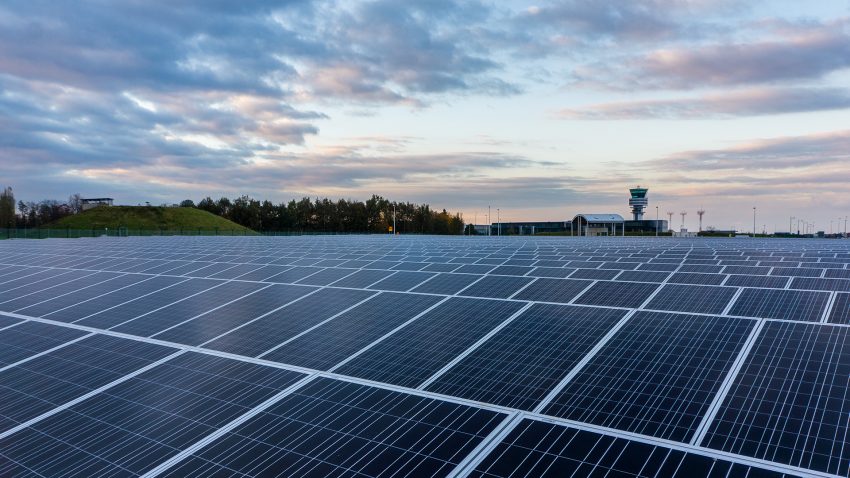Airports are businesses that, amongst others, have been hit hard by the COVID-19 crisis. Whilst government support is needed, the discussion in some states is about making a link between the provision of support and the implementation of CO2 reduction and other climate initiatives. What easy and readily available way is there to do this? Investing in solar panels at airports, both large and small, will help both our aviation sector as well as our climate.
The impact of COVID-19 on the global aviation sector has been enormous. Many airports, airlines and other companies in the aviation sector have had to resort to temporary unemployment, or even redundancies. Cost-saving measures have had to be taken as revenues have drastically decreased. As of late May 2020, we are seeing some small signs of air traffic starting up again. To70 Aviation believes it is important to ensure that climate change actions remain a priority during and after the restart of operations.
Focus on climate neutrality
A number of European states are calling for recovery programmes to be in line with the objective of climate neutrality. Failure to reduce greenhouse gas emissions is not an option. As the CEO of Brussels Airport said at the end of March: “I don’t think it’s abnormal if conditions are attached to government support, and the climate is a major challenge for aviation.”
Invest in solar panels
One relatively easy way for airports to reach climate neutrality is by investing in solar panels. Here’s why:
- Airports usually have plenty of space available that could be used for solar panels both on roofs as well as on the ground. This is, in particular, true for some regional airports. Regionals usually only have one runway, meaning that there is less overlap of the protected surfaces that multi-runway airports have. This logic also extends to the complexity of the solar panel safety assessment, meaning that there are fewer elements to consider when assessing reflection and electromagnetic compatibility. For more on this topic visit our previous blog or watch our masterclass)
- It is not always possible to produce 100% of the airport’s energy needs using solar panels; the amount of energy you can create is dependent on the available space for solar panels. If, however, your airport is able to produce more than it needs, that excess energy may be used elsewhere in the energy network. So there is no energy waste there.
- In contrast to other measures such as the implementation of SAF or operational improvements, this is an easy and readily accessible measure. It is also one that is obviously linked to improving the sustainability of the airport’s operation.
What needs to be done?
So why haven’t all airports already implemented solar panels yet? One of the reasons is that there are few specific regulations regarding the safety of solar panel installations at airports. We at To70 have experience in creating means of compliance and running safety assessments that have been acceptable by the authorities in the countries where we have worked. For example, we recently contributed to the development of a unique solar park at Groningen Airport Eelde (in Dutch).
So what are we waiting for? Let’s invest in a sustainable future for aviation!


Dear Ella, so happy to hear about your current work and to read again how much enthusiasm you always have. Good luck, wish you and your colleagues all the best!